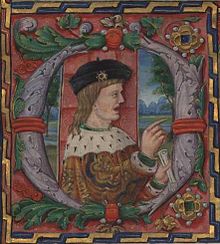Portuguese units of measurement

Portuguese customary units were used in Portugal, Brazil and other parts of the Portuguese Empire until the adoption of the metric system in the 19th century.
The official system of units in use in Portugal from the 16th to the 19th century was the system introduced by king Manuel I around 1499-1504. The most salient aspect of this reform was the distribution of standards (bronze nesting weight piles) to the towns of the kingdom. The reform of weights is unparalled in Europe until this time, due the number of distributed standards (hundreds), the size (64 to 256 marcs) and the rich decoration.
In 1575, king Sebastião distributed bronze standards of capacity measures to the main towns. The number of distributed standards was smaller and uniformity of capacity measures was never achieved.
In 1814, Portugal was the second country in the world – after France – to officially adopt the metric system. The system then adopted used the Portuguese traditional units designation instead of the original French ones (e.g.: vara for metre; canada for litre; and libra for kilogram). However, several difficulties prevented the implementation of the new system and the old Portuguese customary units continued to be used, both in Portugal and in Brazil (which meanwhile had become an independent country in 1822).
The metric system was finally adopted by Portugal and its colonies in 1852, this time using the original names of the units. Brazil replaced Portuguese customary units with the metric system only in 1862.
Route units
| Portuguese name | English name | Subdivides in | Equivalence in Léguas de 20 ao grau |
Metric equivalence |
|---|---|---|---|---|
| Légua de 18 ao grau | League of 18 to the degree | 6173 m | ||
| Légua de 20 ao grau | League of 20 to the degree | 3 milhas geográficas | 1 | 5555 m |
| Milha geográfica | Geographical mile | 1/3 | 1851 m |
Length units
| Portuguese name | English name | Subdivides in | Equivalence in Varas | Metric equivalence |
|---|---|---|---|---|
| Braça | Fathom | 2 varas | 2 | 2.2 m |
| Toesa | Toise | 6 pés | 14⁄5 | 1.98 m |
| Passo geométrico | Geometrical pace | 5 pés | 11⁄2 | 1.65 m |
| Vara | Yard | 5 palmos | 1 | 1.1 m |
| Côvado | Cubit | 3 palmos | 3/5 | 0.66 m |
| Pé | Foot | 12 polegadas | 3/10 | 0.33 m |
| Palmo de craveira | Span | 8 polegadas | 1/5 | 0.22 m |
| Polegada | Inch | 12 linhas | 1/40 | 27.5 mm |
| Linha | Line | 12 pontos | 1/480 | 2.29 mm |
| Ponto | Point | 1/5760 | 0.19 mm |
Weight units
| Portuguese name | English name | Subdivides in | Equivalence in Arráteis | Metric equivalence |
|---|---|---|---|---|
| Tonelada | Tonne | 13.5 quintais | 1728 | 793.152 kg |
| Quintal | Hundredweight | 4 arrobas | 128 | 58.752 kg |
| Arroba | Arroba | 32 arráteis | 32 | 14.688 kg |
| Arrátel | Pound | 4 quartas | 1 | 0.459 kg |
| Marco | Mark | 8 onças | 1/2 | 0.22950 kg |
| Quarta | Fourth | 4 onças | 1/4 | 0.11475 kg |
| Onça | Ounce | 8 oitavas | 1/16 | 28.6875 g |
| Oitava | Dram | 3 escrópulos | 1/128 | 3.5859 g |
| Escrópulo | Scruple | 24 grãos | 1/384 | 1.1953 g |
| Grão | Grain | 1/9216 | 0.0498 g |
Liquid volume units (for Lisbon)
| Portuguese name | English name | Subdivides in | Equivalence in canadas | Metric equivalence |
|---|---|---|---|---|
| Tonel | Cask | 2 pipas | 600 | 840 l |
| Pipa | Barrel | 25 almudes | 300 | 420 l |
| Almude | 2 potes | 12 | 16.8 l | |
| Pote | Pot | 6 canadas | 6 | 8.4 l |
| Canada | 4 quartilhos | 1 | 1.4 l | |
| Quartilho | Pint | 2 meios quartilhos | 1/4 | 0.35 l |
| Meio quartilho | 1/8 | 0.175 l |
See also
References
- Barroca, M.J. (1992) «Medidas-Padrão Medievais Portuguesas», Revista da Faculdade de Letras. História, 2ªa Série, vol. 9, Porto, pp. 53–85.
- Dicionário Enciclopédico Lello Universal, Porto: Lello & Irmão, 2002.
- Monteverde, Emilio Achilles (1861) Manual Encyclopedico para Uzo das Escolas de Instrucção Primaria, Lisboa: Imprensa Nacional.
- Paixão, Fátima & Jorge, Fátima Regina (2006) «Success and constraints in the adoption of the metric system in Portugal», The Global and the Local: The History of Science and the Cultural Integration of Europe. Proceedings of the 2nd ICESHS (Cracow, Poland 6-9, 2006).
- Seabra Lopes, L. (2003) "Sistemas Legais de Medidas de Peso e Capacidade, do Condado Portucalense ao Século XVI", Portugalia, Nova Série, XXIV, Faculdade de Letras, Porto, p. 113-164.
- Seabra Lopes, L. (2005) "A Cultura da Medição em Portugal ao Longo da História", Educação e Matemática, nº 84, Setembro-Outubro de 2005, p. 42-48.
- Seabra Lopes, L. (2018) "As Pilhas de Pesos de Dom Manuel I: Contributo para a sua Caracterização, Inventariação e Avaliação", Portugalia: Nova Série, vol. 39, Universidade do Porto, p. 217-251.
